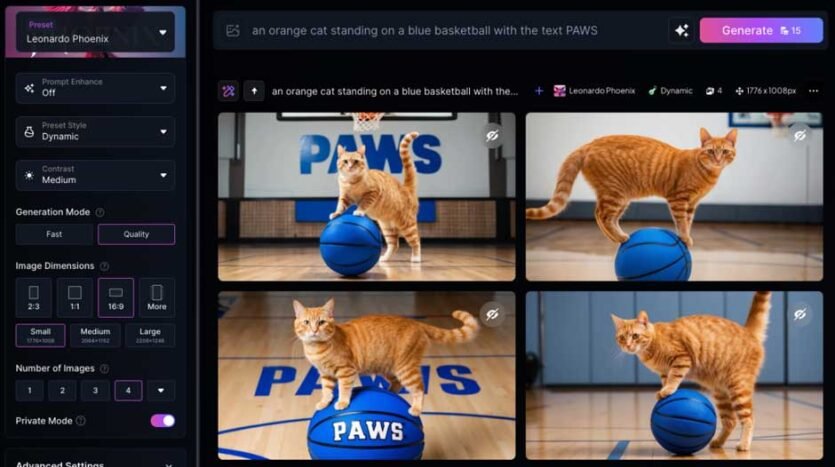Why AI-Generated Product Images Might Be the Future of eCommerce
Product images affect buying decisions. Clear, appealing visuals give shoppers the confidence to purchase. In eCommerce, they are among the most important touchpoints between brand and buyer.
Traditional product photography has held that role for decades. It still works. But it’s becoming slower and more expensive compared to newer methods.
AI-generated images are gaining traction. They offer faster production, higher flexibility, and lower costs.
The Cost and Complexity of Traditional Product Photography
| Factor | Typical Cost Range | Notes |
| Studio rental | $200 – $1000/day | Lighting, props, and setup not included |
| Photographer | $500 – $2000/day | May vary based on expertise |
| Models | $100 – $1500/day | Per model, per shoot |
| Post-production editing | $10 – $50/image | Image corrections, background removal |
| Time spent | 2–4 weeks | From planning to final image delivery |
Photoshoots require coordination. Delays can occur. Products may arrive damaged. Seasonal campaigns face tighter windows. If one image set needs reshooting, costs double.
Once done, there’s little room for quick revisions. Need a new colourway or model background? That’s another round of planning and expense.
What Are AI-Generated Product Images?
An AI-generated product image is built using prompts, not cameras. Creators describe the product, context, lighting, and style. The system then produces a visual that matches the request.
No physical shoot. No props. No studio.
These systems use deep learning trained on massive datasets. They understand object structure, lighting, and styling cues. Once a product type is specified, the tool can place it in almost any setting, from minimalistic backdrops to complex scenes.
Here’s a simple example:
- Prompt: “Modern armchair in a white studio with soft shadows”
- Output: A photorealistic chair image with studio lighting
The result can be upscaled, edited, or re-prompted until it meets expectations.
The Rise of AI Image Generation Tools in eCommerce
Retailers and digital agencies are turning to AI for product visuals. It’s already being used for testing image variations, prototyping before shoots, or even launching new SKUs without holding physical stock.
Instead of relying on weeks-long production cycles, brands now generate on-brand visuals in minutes. This is particularly useful when working with multiple colourways or personalisation options.
eCommerce teams are increasingly adopting platforms like Leonardo.Ai, a leading solution for AI image generation that helps brands build scalable product visuals through prompt-based workflows. What once required a team of photographers and designers now happens inside a browser.
The appeal goes beyond speed. AI systems let teams test different aesthetics or layout styles before committing to a full campaign. Variations can be produced for A/B testing. Content can be localised for different markets without redoing a shoot.
Benefits for Online Stores
Different teams gain different advantages. Here’s a breakdown:
Marketing Teams:
- Faster creation of assets for paid ads, social media, and landing pages
- Easy localisation and audience-specific styling
- Bulk image variants without increasing budget
Product Teams:
- Quick turnaround on new product visuals before launch
- Variations for every colour, size, or packaging type
- Concept testing for pre-launch feedback
Operations:
- Reduces logistics involved in photography
- Shortens production cycles for seasonal items
- Cuts cost per SKU
AI-generated visuals also help smaller brands match the output scale of larger players without needing a full creative department.
Challenges and Accuracy Concerns
AI-generated content still faces scrutiny. Sometimes the outputs look slightly off—bottle caps may not align with labels, shadows may not match, or fabrics may appear too smooth. Minor flaws can break trust if the shopper notices.
Texture realism is another concern. Product surfaces such as gloss, grain, or stitching details can be hard to replicate accurately. Customers want to see fine features before committing to a purchase.
There’s also the matter of compliance. Misrepresenting a product visually—even unintentionally—can lead to refund requests, negative reviews, or disputes with platforms.
Most brands using AI still apply manual review. They either refine the prompt, re-render variations, or pass visuals to designers for touch-ups before going live.
Potential Use Cases Across Product Categories
Here’s how AI image generation supports different product types:
| Category | Use Case Example |
| Fashion | Swap colourways, generate images on different body types |
| Furniture | Stage furniture in virtual rooms with various interiors |
| Beauty & Skincare | Render cosmetics on different skin tones or settings |
| Footwear | Create lifestyle shots in urban, studio, or nature setups |
| Tech Gadgets | Simulate clean product flat lays or 3D-style presentations |
These use cases reduce dependency on staged shoots and speed up testing across product ranges.
Are We Heading for a Hybrid Future?
AI won’t replace traditional photography across the board. Some products require tactile proof, 360° rotation, or physical usage demos. But a hybrid approach is likely.
Photography delivers realism and trust. AI adds scale and adaptability. Teams will blend both—starting with AI for early-stage work, then fine-tuning results or supplementing with real photos for product listings.
Imagine launching with 80% AI visuals and 20% real photos. The mix will depend on product category, audience expectations, and channel.
Final Thoughts
AI-generated product images are shifting how online stores handle visual content. They simplify production, reduce costs, and speed up execution.
Early adopters are already using them to test layouts, localise visuals, and launch faster. They’re not a replacement for everything, but they’re becoming a practical tool for teams trying to scale.
In a space where visuals lead conversions, having faster, smarter tools is more than helpful—it’s a competitive advantage.


